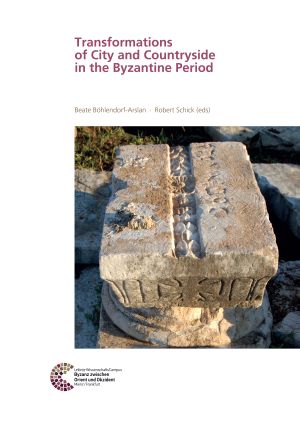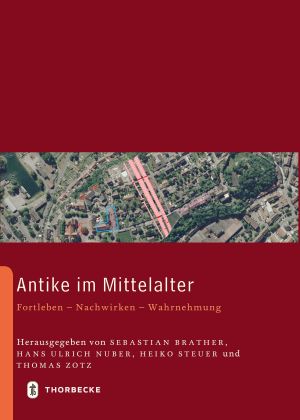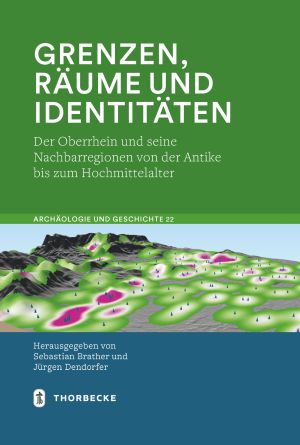Schreg, Rainer
A Most Pleasant Scene and an Inexhaustible Resource Steps Towards a Byzantine Environmental History: Interdisciplinary Conference November 17th and 18th 2011 in Mainz
What do we know about the environments in which the Byzantine Empire unfolded in the eastern Mediterranean? How were they perceived and how did man and the environment mutually influence each other during the Byzantine millennium (AD 395-1453)? Which approaches have been tried up until now to understand these interactions? And what could a further environmental-historical research agenda look like?
These questions were the focus of an interdisciplinary conference that took place on 17 and 18 November 2011 in Mainz. The present conference volume brings together contributions from researchers who have approached these issues from very different perspectives. They focus on the explanatory power of traditional as well as »new« sources and the methods of Byzantine Studies and Byzantine archaeology for this hitherto little-explored sphere. In this way, we see how closely environmental history is interwoven with the classical topics of Byzantine research – be they of an economic, social or culture-historical nature.
Transformations of City and Countryside in the Byzantine Period
The concept of »transformation« or simply »reshaping« contains the elements of what remains, the conservative, the kernel of what continues, as well as the elements of what changes, the innovative. In the framework of this publication of articles from a conference in 2016 on »Transformations of City and Countryside in the Byzantine Period«, we draw attention to this dichotomy and investigate the social dynamics behind changes in urban and rural life in the Byzantine period that can be detected by archaeology, history and art history.
The Byzantine Empire is an ideal subject for studying how social transformation proceeds, what triggers transformation, what factors underlie it and what the processes involved are. Who were the agents of transformation and how did they and their environment change? How flexible were the state or its citizens in handling external and internal pressures of innovation? In what manner and to what extent were the Byzantines able to preserve their identity and the internal cohesion of their empire in the course of these processes of adaptation?
Römische Landnutzung im antiken Industrierevier der Osteifel
From the beginning of the Roman Imperial period, the area between Mayen on the edge of the Eifel and Andernach on the Rhine experienced an enormous increase in its economic activity. In a short time, an industrial area developed there, from which wide areas in the Roman north-western provinces were supplied with high-quality basalt lava millstones, light tuff and later also heat-resistant ceramics. Quarries were newly established, land and water routes were expanded, existing outlets were extended and others were still to be developed. Setbacks in the 3rd and 4th centuries were followed by further booms.
How could the numerous workers and their families be fed, and what consequences did the success of the stone and energy-intensive pottery industries have for the environment? In order to clarify this, two Roman villas on the northern edge of the Mayen millstone quarries were investigated with geophysical measurements, excavations, geoarchaeological and botanical studies, and their entire surroundings were explored. The results are presented in this book. The inhabitants of the villa Mendig, »Im Winkel« were themselves involved in the production of millstones. In late antiquity, a surface drainage system there probably kept a transhipment point for millstones on the Segbach dry, while a fortified storage building ensured the supply of the quarrymen. Quarry owners resided in the villa Mendig, »Lungenkärchen«. It turned out to be an axial courtyard with an impressive water basin. Inspections led to the discovery of the burial ground belonging to »Lungenkärchen« with monuments made of Lorraine limestone as well as the discovery of a previously unknown vicus »Im Terl«.
Antike im Mittelalter. Fortleben, Nachwirken, Wahrnehmung: 25 Jahre Forschungsverbund »Archäologie und Geschichte des ersten Jahrtausends in Südwestdeutschland«
A new, preferably unbiased view of spatial structures proves to be a decisive prerequisite for freeing research from rigid assumptions and models. This makes it possible to replace previous and necessarily highly simplified ladder counts with complex reconstructions. Beyond large lines, spatial relationships and structures prove to be flexible and changeable. The contributions collected in this volume underline how different approaches and perspectives can be, even if they deal with the seemingly self-evident "space". In this opening beyond deterministic concepts and conceptions of space, which geography has long since completed, there are new opportunities for archaeological and historical studies.
Grenzen, Räume und Identitäten: Der Oberrhein und seine Nachbarregionen von der Antike bis zum Hochmittelalter
A new, preferably unbiased view of spatial structures proves to be a decisive prerequisite for freeing research from rigid assumptions and models. This makes it possible to replace previous and necessarily highly simplified dominant narrative with complex reconstructions. Beyond large lines, spatial relationships and structures prove to be flexible and changeable. The contributions collected in this volume underline how different approaches and perspectives can be, even when they deal with the seemingly self-evident "space". In this opening beyond deterministic concepts and conceptions of space, which geography has long since completed, there are new opportunities for archaeological and historical studies.











